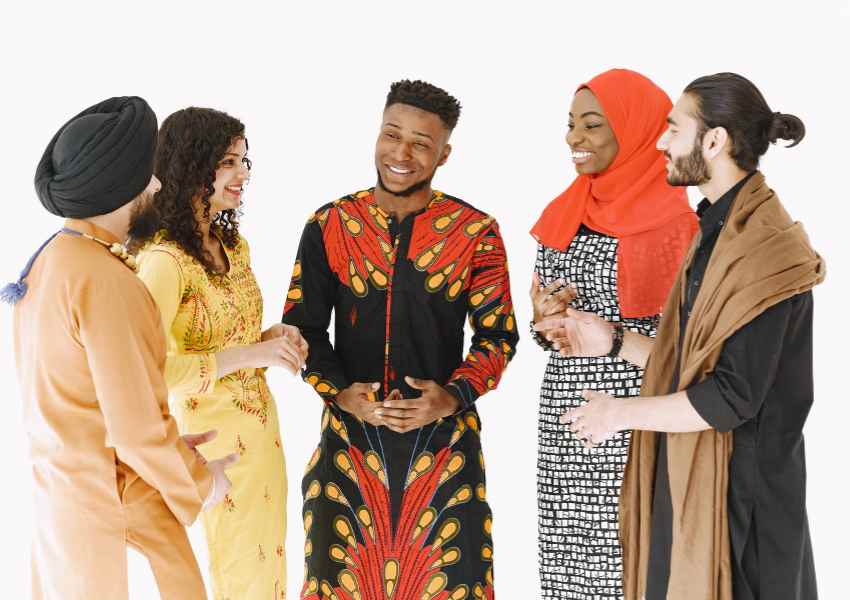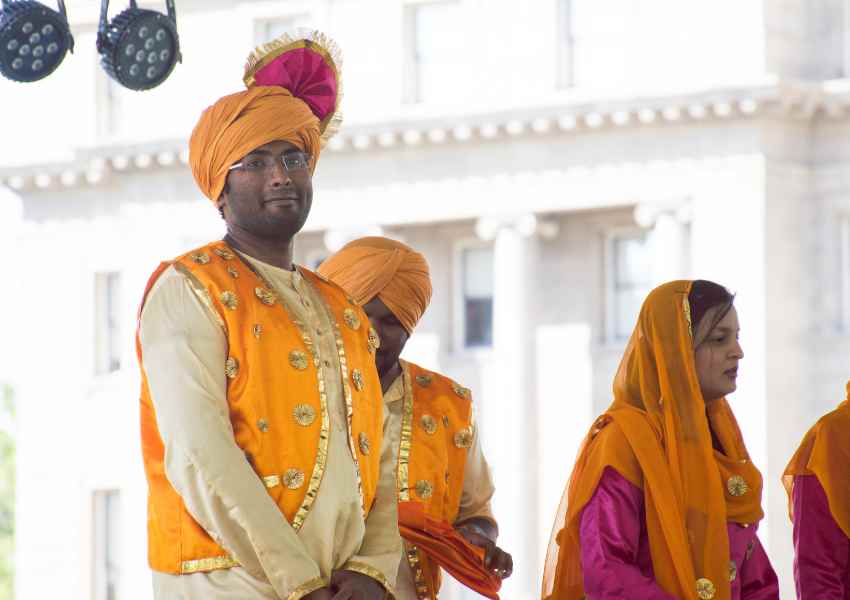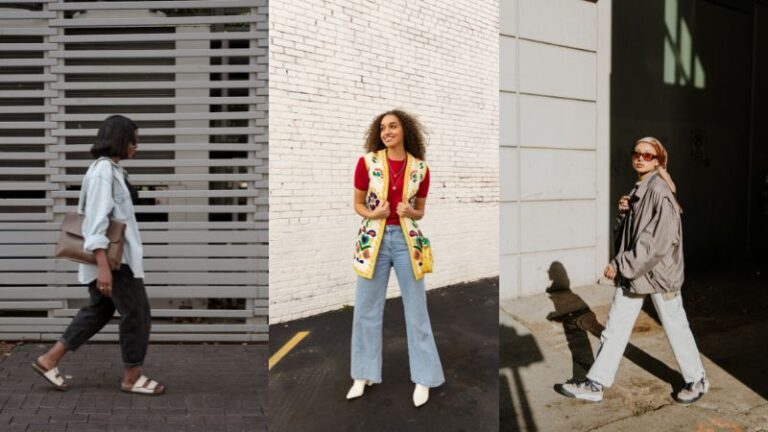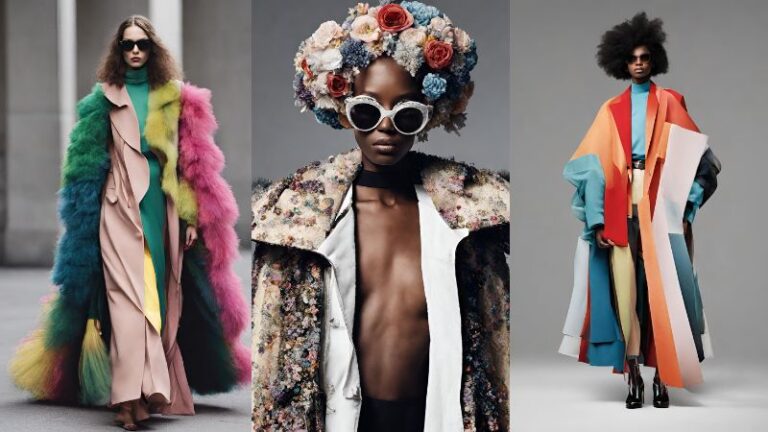In recent years, the fashion world has been buzzing with two significant terms: cultural appreciation and cultural Appreciation. These concepts are not just trendy buzzwords but reflect deep and meaningful discussions about how fashion intersects with diverse cultures. Understanding these terms is crucial, especially in a world where fashion goes beyond borders and screens.

Cultural appropriation in fashion occurs when someone adopts elements of a culture that is not their own in a way that lacks understanding, respect, or acknowledgement of the original culture. This often happens without permission and can lead to controversy and hurt feelings. Imagine a situation where a fashion designer from one culture uses sacred symbols from another culture in their clothing line without understanding their significance. This could be seen as cultural appropriation.
On the other hand, cultural appreciation is about respectfully and knowledgeably embracing elements from other cultures. It involves learning about, understanding, and honoring the cultural significance behind what is being used. A designer who collaborates with artisans from another culture, ensuring their art is represented authentically and respectfully, is appreciating that culture.
But why is this topic so relevant in today’s fashion industry? In our interconnected world, where fashion trends travel at the speed of social media, it’s easy to cross the line from appreciation to appropriation. With the rise of global awareness and social justice movements, people are more conscious of respecting cultural identities and expressions. This heightened sensitivity has made it essential for those in the fashion industry, from big-time designers to everyday consumers, to understand the impact of their fashion choices on different cultures.

Section 1: Understanding Cultural Appropriation in Fashion
Cultural appropriation in the realm of fashion occurs when elements from a particular culture are adopted, often without permission or understanding, by members of another culture. This can include clothing, symbols, hairstyles, or even traditional practices. The crucial aspect is that it happens without proper respect for or acknowledgement of the culture from which these elements are borrowed. In this section, we will dissect the key components that constitute cultural appropriation within the context of fashion.
Historical Examples: Illustrating Past Missteps
To truly comprehend cultural appropriation, it’s essential to examine historical instances where the fashion industry has made missteps. In the past, designers have been guilty of taking sacred symbols, traditional garments, or cultural practices and using them in a way that disrespects their origin. For instance, the misappropriation of Native American headdresses as fashion accessories or the use of religious symbols without understanding their significance are examples that highlight the need for a deeper understanding of cultural contexts.
Contemporary Issues: Recent Controversies
The fashion industry is not immune to ongoing controversies related to cultural appropriation. In this part of the section, we will delve into recent events that have sparked debates and discussions. Examining these contemporary issues will provide insight into how the industry is grappling with the challenges of cultural sensitivity. From high-profile fashion campaigns to celebrity-inspired designs, we will explore instances that have brought cultural appropriation into the spotlight.
Impact on Communities: The Ripple Effect
Cultural appropriation is not a victimless act; it has tangible effects on the communities whose cultural elements are being appropriated. This section will discuss how such actions can result in the erasure of cultural identities, perpetuate stereotypes, and undermine the significance of cultural symbols. Understanding the impact on these communities is crucial for fostering empathy and promoting a more inclusive and respectful approach to fashion.
Ethical Considerations: Navigating the Gray Areas
As we delve into the ethical considerations surrounding cultural appropriation in fashion, we will explore the gray areas and complexities of this issue. Questions of intent, awareness, and responsibility will be addressed. Does ignorance excuse appropriation? How much responsibility should a designer bear for understanding the cultural implications of their creations? This section aims to prompt critical thinking about the ethical dimensions of cultural appropriation in the fashion industry.

Section 2: Exploring Cultural Appreciation in Fashion
Cultural appreciation stands in stark contrast to appropriation, emphasizing a respectful and informed engagement with elements from diverse cultures. In this section, we’ll clarify the concept of cultural appreciation within the fashion context. Unlike appropriation, appreciation involves a genuine understanding of and respect for the cultural significance of the elements incorporated into fashion designs.
The Right Approach: Navigating Respectful Appreciation
Appreciating other cultures in fashion requires a thoughtful and respectful approach. Designers and brands play a pivotal role in setting the tone for cultural appreciation. This part of the section will delve into the right approach, exploring how designers can conduct thorough research, collaborate with cultural experts, and seek permission when incorporating elements from different cultures. We’ll emphasize the importance of being aware of cultural contexts to avoid unintentional disrespect.
Success Stories: Learn from Positive Examples
To reinforce the principles of cultural appreciation, we’ll showcase success stories where fashion designers have embraced elements from various cultures without appropriating them. Examining these examples will provide practical insights into how it’s possible to create stunning, culturally inspired fashion while paying homage to the roots of those influences. From collaborative projects to culturally sensitive campaigns, success stories will serve as inspiring models for the industry.
Benefits of Cultural Exchange: Fostering Mutual Respect
Cultural appreciation not only allows for the celebration of diversity but also opens the door to positive cultural exchange and mutual respect. In this part of the section, we’ll explore the benefits of cultural exchange in the fashion world. This includes fostering a richer and more inclusive creative landscape, breaking down stereotypes, and creating a platform for authentic representation. By highlighting the positive outcomes, we aim to emphasize the value of cultural appreciation in promoting a more harmonious global fashion community.
Section 3: The Fine Line Between Appropriation and Appreciation
The distinction between cultural appropriation and cultural appreciation in fashion can often seem like a fine line, blurred by nuances and differing perspectives. In this section, we’ll explore the subtleties that differentiate these two concepts. Identifying this line involves understanding the context, intent, and impact of using cultural elements in fashion. We’ll discuss how the same element can be seen as appropriation in one context but appreciation in another, depending on these factors.
Case Studies: Analyzing Controversial Fashion Examples
To bring clarity to the distinction between appropriation and appreciation, we’ll analyze a few controversial fashion items and campaigns. These case studies will include instances where fashion brands faced backlash for their designs or marketing strategies. We will dissect each example, examining the cultural elements used, the intent behind their use, and the public’s reaction, to determine whether these instances fall under appropriation or appreciation. This analysis will provide practical insights into how these situations could have been handled differently.
Perspectives: Diverse Views on the Matter
Understanding cultural appropriation and appreciation isn’t complete without considering diverse viewpoints. In this part of the section, we will include opinions from cultural experts, fashion designers, and community representatives. These perspectives will shed light on how different groups perceive the use of cultural elements in fashion. By presenting a range of viewpoints, we aim to offer a well-rounded understanding of the complexities involved in this issue.
Responsibility of Fashion Designers: Upholding Cultural Sensitivity
Fashion designers play a crucial role in how cultures are represented and respected in the industry. This section will focus on the responsibility of designers to ensure cultural sensitivity in their work. We will discuss the importance of designers educating themselves about the cultural significance of elements they wish to incorporate into their designs. Emphasizing the need for empathy, research, and collaboration, we’ll explore ways designers can avoid unintentional cultural insensitivity and instead promote a culture of appreciation and respect in their creations.

Section 4: Guidelines for Culturally Sensitive Fashion Design
In the world of fashion, cultural sensitivity is crucial. This section offers a step-by-step guideline for designers to follow when incorporating elements from other cultures into their designs. These steps include:
- Understanding the Origin: Know the history and origin of the cultural element you wish to use. This step is crucial to avoid misinterpretation or misuse of cultural symbols.
- Assessing Intent: Reflect on why you want to use this element. Is it to honor the culture or for aesthetic reasons only? The intent behind the use can often determine if it’s appreciation or appropriation.
- Seeking Permission and Advice: Whenever possible, seek permission from cultural representatives. This not only shows respect but also ensures authenticity in your design.
- Being Open to Feedback: Be prepared to receive and respond to feedback, both positive and negative, from the community whose culture you are representing.
Collaboration with Cultural Representatives: Building Bridges
Collaboration with individuals from the culture being represented is not just respectful; it’s enriching. This section emphasizes the importance of such collaborations. Working directly with cultural representatives can provide valuable insights and contribute to a more authentic representation of their culture in fashion. This collaboration can take various forms, from consulting roles to co-designing projects.
Education and Research: Laying the Groundwork
Thorough research and education are fundamental to understanding the cultural significance behind different elements. This part of the section stresses the need for designers to immerse themselves in learning about the culture they are inspired by. This includes understanding the history, traditions, and meanings associated with the cultural elements they plan to use. Such education can come from academic research, cultural immersion programs, or direct engagement with cultural experts.
Legal Aspects: Understanding the Boundaries
While the focus of culturally sensitive fashion design is often on ethical considerations, there are also legal implications to be aware of. This section will briefly touch upon the legal aspects of cultural appropriation in fashion. It includes copyright laws, intellectual property rights, and the potential legal repercussions of using culturally significant symbols without permission. Awareness of these legalities not only helps in avoiding legal complications but also reinforces the importance of respect and proper acknowledgment in the use of cultural elements in fashion design.
Section 5: The Role of Consumers in Promoting Cultural Appreciation
Consumers play a significant role in shaping the fashion industry, and with that role comes a responsibility to be aware of the cultural implications of their fashion choices. In this section, we will discuss how consumers can educate themselves about the cultural significance of different elements in fashion. This involves staying informed about the origins of clothing, accessories, and designs they are drawn to and considering the impact their choices may have on the cultures they represent.
Support for Authentic Representation: Backing Cultural Appreciation
Beyond personal awareness, consumers can actively support brands and designers who practice cultural appreciation. This involves choosing products that authentically represent a culture without appropriating its elements. By consciously opting for brands that engage in respectful practices, consumers contribute to creating a demand for culturally sensitive fashion. This part of the section will highlight the power consumers hold in influencing the industry positively through their purchasing choices.
Advocacy and Call to Action: Empowering Consumer Voices
Advocacy is a potent tool for change, and consumers can use their voices to promote cultural sensitivity in the fashion industry. This section will guide consumers on how to advocate for the values they believe in. It may include:
- Social Media Activism: Sharing information and opinions on social media platforms to raise awareness and foster discussions.
- Boycotts and Support: Encouraging or participating in boycotts of brands that engage in cultural appropriation while actively supporting those that embrace cultural appreciation.
- Engagement with Brands: directly communicating with brands through social media or customer service channels to express concerns or appreciation for their cultural practices.
- Participating in Initiatives: Joining or supporting initiatives that promote diversity and cultural understanding in the fashion industry.
Section 6: The Future of Cultural Dynamics in Fashion
Emerging Trends: Celebrating Cultural Appreciation
As the fashion industry evolves, emerging trends are shaping a future where cultural appreciation is prioritized. This section will delve into these trends, exploring how designers are embracing diverse cultural influences in innovative and respectful ways. From inclusive runway shows to collaborations with underrepresented communities, we’ll highlight the positive shifts that indicate a future where cultural appreciation is not just a trend but a fundamental aspect of fashion.
Predictions for the Industry: Evolving Cultural Representation
In this part of the section, we will offer insights into how the fashion industry might evolve in terms of cultural representation. This involves discussing potential changes in industry norms, regulations, and consumer expectations. Predictions may include increased demand for transparency, a rise in sustainable and culturally sensitive fashion brands, and a shift towards more authentic cultural narratives in marketing and design.
The Role of Social Media and Influencers: Shaping Cultural Conversations
Social media and influencers wield immense influence over cultural conversations, especially in the fashion world. This section will examine how social media platforms and influencers impact discussions around cultural appropriation and appreciation. We’ll explore how influencers can use their platforms to promote awareness, hold brands accountable, and foster a more inclusive and respectful fashion landscape. Additionally, we’ll discuss the potential pitfalls and challenges posed by social media in navigating cultural dynamics.
What is the difference between cultural appropriation and cultural appreciation in fashion?
Cultural appropriation in fashion refers to the adoption of elements from a culture without understanding, respect, or acknowledgment of their significance. It often results in the commodification of cultural symbols. On the other hand, cultural appreciation involves respectfully incorporating elements from other cultures, understanding their meanings, and celebrating diversity without perpetuating stereotypes.
How can I distinguish between cultural appropriation and cultural appreciation when shopping for fashion items?
When shopping, pay attention to the context and intent behind the design. If a fashion item draws inspiration from a specific culture without trivializing or misrepresenting it, it is likely an example of cultural appreciation. Additionally, consider the brand’s track record, commitment to diversity, and whether they collaborate with cultural representatives. Supporting brands that demonstrate genuine cultural appreciation fosters positive change in the industry.
Are there instances where cultural exchange in fashion is acceptable?
Yes, cultural exchange in fashion can be acceptable and even beneficial when approached respectfully. Collaborative efforts with cultural representatives, proper acknowledgment, and a genuine effort to understand and honor the cultural elements involved contribute to a positive exchange. The key is to avoid appropriation, which occurs when cultural elements are taken out of context or used without understanding their cultural significance.
How can designers balance creativity and cultural sensitivity in their fashion creations?
Designers can balance creativity and cultural sensitivity by following a few key principles. Thoroughly research the cultural elements they wish to incorporate, seek permission or collaboration with cultural representatives, and aim for accurate and respectful representation. Additionally, being open to feedback, staying informed about global issues, and continually educating themselves on cultural dynamics contribute to creating culturally sensitive and innovative fashion designs.
Conclusion
In this comprehensive exploration of cultural appropriation and appreciation in fashion, we covered the definitions, historical examples, contemporary issues, and the responsibilities of both designers and consumers. We delved into the fine line between appropriation and appreciation, provided guidelines for culturally sensitive fashion design, and discussed the crucial role consumers play in promoting cultural appreciation.
As we look ahead, it’s essential to reflect on the future of cultural dynamics in fashion. The industry has the power to either perpetuate harmful practices or become a force for positive change. Considering the potential impact of our choices on diverse cultures, we should collectively strive for a fashion landscape that respects, appreciates, and celebrates the richness of global diversity.







